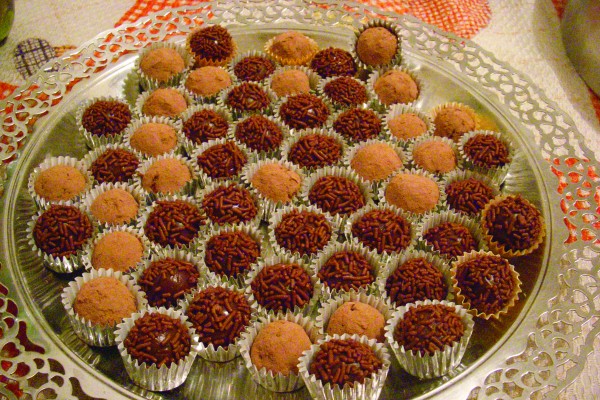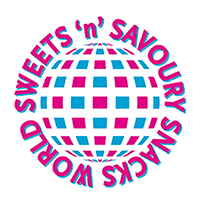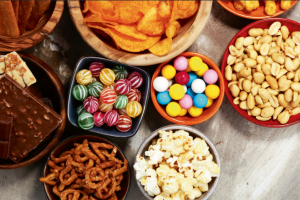A spotlight on Brazil

With Brazil firmly in the spotlight during the World Cup celebrations, Miriam Wells and Kylie Kendall report on prospects for the country’s confectionery sector.
While Brazilians have been happy with the success of their FIFA World Cup hosting (if not with the success of their team), the prospects for the country’s confectionery industry are rather more mixed.
Sales of sweet confectionery have been falling as consumers turn away from sugary snacks in favour of healthier choices. The Brazilian sector has also been coping with major fluctuations in sugar and cocoa prices, inflation and taxation, as well as intense competition from countries in Europe and the US that can produce and sell sweet goods internationally at competitive prices.
Bucking this trend is the chocolate sector, which is booming, as the growth of Brazil’s emerging middle class means more consumers are making treat purchases on a regular basis – and they consider chocolate to be a little luxury.
Sugar confectionery, by contrast, is regarded as a down-market purchase and the quality of domestically manufactured products has not always been high – so consumers with greater spending power and more discerning tastes have started to buy more chocolate.
The market
“The sugar sector is experiencing its most severe crisis in recent years,” says Carlos Barion, of the Brazilian Association of Chocolates, Cocoa, Peanuts, Confectionery and Derivatives (Abicab). He stresses how a decline in sales during the first months of 2014 followed a negative -0.2 per cent compound annual growth rate in volume sales of sugar and gum confectionery between 2008 and 2012.
While the size of the Brazilian population (198 million) means the market for confectionery is still the third largest in the world, with total volume sales for sugar and gum confectionery (not including chocolate, ice cream and sweet bakery) of 259,000 tonnes in 2012, the strongest volume sales growth in recent years was in 2007, and even then it was just three per cent year-on-year.
And future prospects look gloomy, with growth predicted by market research company Mintel Group to be just 0.2 per cent between 2013 and 2017 [1].
However, product sales values of sugar and gum confectionery are a different story says Barion. They have been growing steadily with a compound annual growth rate between 2008 and 2012 of 5.5 per cent. The strongest growth in recent years was in 2011 with a rate of 6.5 per cent, and total value sales in 2012 were an impressive Brazilian Real BRL10.62bn (US$4.76bn).
Mintel has predicted growth of 6.1 per cent between 2013 and 2017, reaching a value of BRL14.37bn (US$6.51bn) by 2017.
However, inflation is a major factor in the increase in value sales, with data released in June showing Brazil’s benchmark IPCA consumer price index rose 6.37 per cent in the 12 months leading up to May.
Price rises are also being driven by the increasing costs of raw materials, with sugar production costs rising in Brazil in recent years in particular because of poor weather – Brazil’s dominance on global sugar markets make its cost a market benchmark for exporters who might seek to service Brazilian confectionery manufacturers.
Popular options
Overall, the sugar and gum confectionery market is “in decline and it’s expected to stay that way,” says São Paulo based Renata Benites, an analyst with market researcher Euromonitor International. “People are seeking healthier options and better tasting options,” she adds.
This trend towards healthier foods has the potential to hit manufacturers even harder in the years to come, with Brazil in the midst of an obesity epidemic. Government data shows the percentage of Brazilians registered as ‘obese’ rose from 11 per cent to 16 per cent between 2006 and 2011, and 51 per cent of the population is now ‘overweight.’ While the government has taken little action so far, it is set to become a focus going forward, with controls and taxes on high sugar and fat products likely to be considered.
That said, chocolate sales are soaring, rising in value at an extraordinary 69 per cent between 2008 and 2013 to BRL9.23 billion (US$418m), according to a Mintel Brazil chocolate confectionery report published in February. Volume sales grew 16 per cent over the same period to 242 million kg.
Fuelling this boom in the chocolate market is Brazil’s growing prosperity, as the emerging economy means its population has more money to spend than ever before. Poverty was reduced drastically between 2001 and 2009, putting 31 million people into Brazil’s middle class, according to Organisation for Economic Co-operation & Development (OECD) development centre director Mario Pezzini. More than half the population are now middle class now (as assessed by the OECD), which means millions more people are willing and able to buy products regarded as a special treat.
Only one-in-four Brazilians buy chocolate on impulse, according to Mintel, indicating it is still a planned, ‘premium’ purchase. Sales of ice cream – another treat purchase – are also showing healthy positive growth.
Consumers are looking for value-added confectionery products that are perceived as healthy, said Benites, such as Nestlé’s Nesfit and Mondelēz International’s BelVita Breakfast biscuits, marketed as a breakfast food with added fibre and vitamins.
Meanwhile, Kibon, a Brazilian-Argentinean ice cream manufacturer owned by Unilever, has tapped value-added and budget segments, last year launching a new range of flavours, such as cheesecake and tiramisu, which are marketed as indulgent and value-added, while having been repackaged in smaller portions in order to retain the same price.
Growth potential
Mintel research released in 2012 showed that one in two Brazilian consumers would buy more confectionery if there were sugar-free options, while two out of three prefer confectionery made with natural fruit juice, indicating good potential for growth in the healthy confectionery area.
Today’s Brazilian consumer is “more mature, more demanding and more capitalised,” and needs companies to respond to that, says Barion. But local manufacturers need to invest to respond. He refers to a recent Abicab study that showed confectionery sold in Brazil and made by both multinational and domestic producers has “high sweetness, little flavour, low duration of flavour [and] little application of technological resources available.”
Benites echoes this sentiment: “The sugar confectionery is not that good here. People want better quality products.” Functional products such as those including fibre or vitamins and natural sweeteners such as stevia are an untapped opportunity so far.
Sophisticated new flavours, such as tropical and dessert, are also proving popular both within the sugar confectionery and chocolate segments.
Chocolates Brasil Cacau, which Benites says is a key beneficiary of the growing demand for high quality chocolate products, this Easter launched a truffle with a passion fruit flavoured filling, one of Brazil’s most popular tropical fruits. Meanwhile, a range of fruit flavours, such as green apple and passion fruit launched in May (2014) by tic tac has been well received by consumers.
Global trade
Brazil is a significant player in global sugar markets – albeit with some major fluxes in trade flows.
Sugar exports to the US fell sharply between 2011 and 2012, while sales to the EU soared. Sales of Brazilian raw sugar not containing flavouring or colouring to the US fell from about US$285m to US$20m between 2011 and 2012, having earned US$240m in 2010, and US$76m in 2009.
By contrast, Brazilian exports to the European Union (EU) have been booming – earning more than US$1bn in 2011 – more than double that in 2010 US$544m and 2009 US$269m.
Meanwhile, Brazilian confectionery product exporters have been achieving strong returns on the US market, exceeding the value of imports into Brazil of products from Europe’s strong confectionery manufacturing sector. Brazilian exports to the US of sugar confectionery earned about US$41m in 2013.
Conclusion
Back at home, the World Cup should provide a small but welcome boost. Mintel predicted a growth of two per cent in volume sales during the football tournament and the Olympics in 2016. Nestlé should do especially well, having secured a position as a FIFA sponsor. “Seasonality always generates greater demand, and the World Cup is without doubt seasonality,” concludes Barion.
References
[1] Mintel Sugar and Gum Confectionery in Brazil 2013 Global Market Navigator Report



